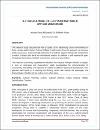Italo-Australian Transnational Houses: Culture and Built Heritage as a Tool for Cultural Continuity
| Author | Furlan, Raffaello |
| Author | Faggion, Laura |
| Available date | 2017-11-14T09:02:01Z |
| Publication Date | 2015 |
| Publication Name | Architecture Research |
| Identifier | http://dx.doi.org/10.5923/j.arch.20150502.04 |
| Citation | Raffaello Furlan , Laura Faggion , Italo-Australian Transnational Houses: Culture and Built Heritage as a Tool for Cultural Continuity, Architecture Research, Vol. 5 No. 2, 2015, pp. 67-87. doi: 10.5923/j.arch.20150502.04. |
| ISSN | 2168-507X |
| Abstract | (The Problem) The classical theorist Vitruvius celebrates architecture as an expression of societies’ cultural factors where culture has a determinant role in shaping built forms. Despite this notion of architecture has also been acknowledged by modern theorists, scholars stress that contemporary societies often ignore to consider buildings of cultural significance as an heritage asset of societies and therefore lack to protect them. (Objective) The purpose of this paper is to understand how the fulfillment of users’ needs, based on their cultural framework, had priority in the architectural design process of their houses. More specifically, the main objectives are (1) to understand the nature of the cultural factors influencing the form of Italian migrants’ transnational houses in Australia and (2) to recognize why these houses can be categorized as an heritage asset of the Australian built environment. (Methods) In order to provide an answer to the two research questions, firstly the authors review the literature supporting the significance of built and culture heritage within the development of the built environment; secondly a detailed case study in Brisbane is selected for the collection of data. (Contribution) As a result of this investigation, (1) the extent to which Italian transnational houses were conceived in response to specific cultural needs and (2) why these buildings, which are part of the multi-cultural built environment of Australia, should be preserved and restored, is revealed. |
| Language | en |
| Publisher | Scientific & Academic Publishing |
| Subject | Culture Cultural heritage Built heritage Cultural traditions Social capital Vernacular and transnational houses |
| Type | Article |
| Pagination | 67-87 |
| Issue Number | 2 |
| Volume Number | 5 |
| ESSN | 2168-5088 |
Files in this item
This item appears in the following Collection(s)
-
Architecture & Urban Planning [306 items ]



